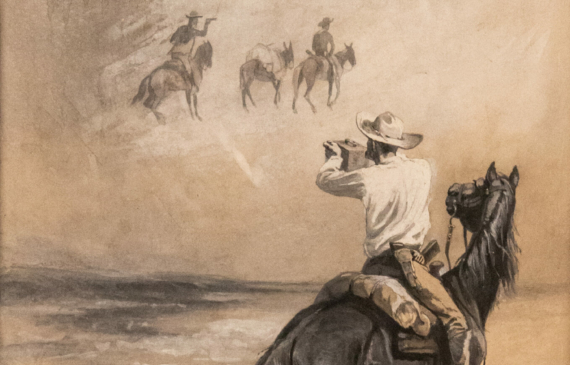
Frederic Remington (American, 1861-1909)
Photographing the Mirage, circa 1886-87
Graphite and gouache on heavy paper
Signed lower right: Remington
Sight size: 14 H. x 10 W. inches
Original backing board: 14 ¼ H. x 10 ¼ W. inches
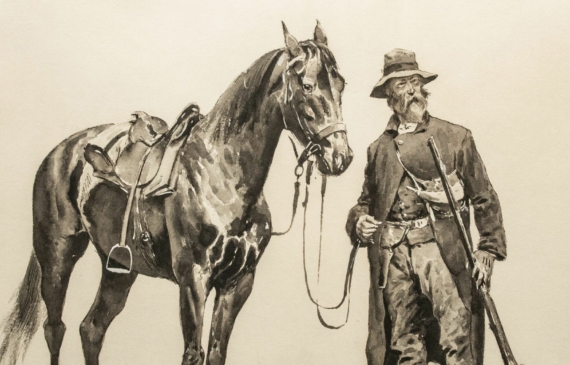
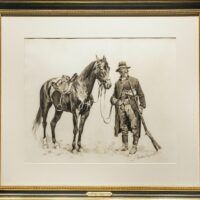
Frederic Remington (American, 1861-1909)
The Story of a Thousand: A history of the service of the 105th Ohio Volunteer Infantry, 1862 – 1865
Graphite and watercolor on paper, c. 1895
18 ¾ H. x 23 ¾ W. inches
Signed lower right: Frederic Remington
Provenance:
Kennedy Galleries, 1965
Private Collection, Iowa
By direct descent
Illustrated:
“The Story of a Thousand.” The Cosmopolitan, March 1895, p. 619.
Reference:
Harold McCracken, Frederic Remington: Artist of the Old West, 1947, p. 619
Peter H. Hassrick, Melissa J. Webster, Frederic Remington: A Catalogue Raisonné”, Volume II, 1996, p. 558
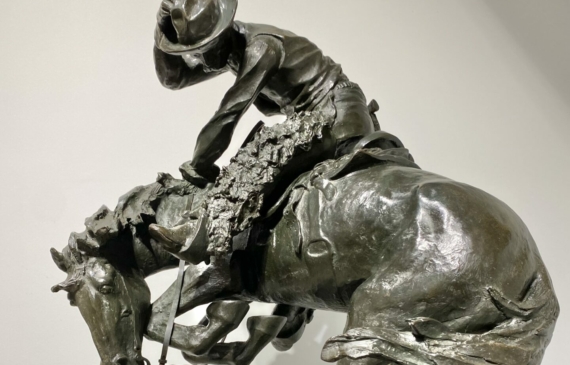
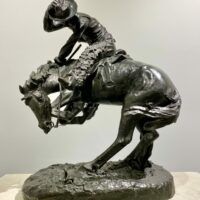
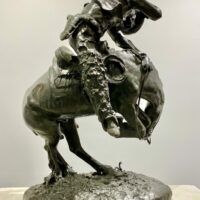
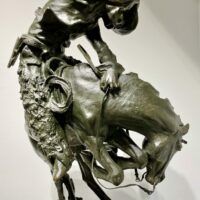
Frederic Remington (American, 1861-1909)
The Rattlesnake, 1905
Bronze, dark brown patina
22 ½ H. x 18 W. x 14 D. inches
Signed: Frederic Remington
Inscribed: ROMAN BRONZE WORKS N-Y-
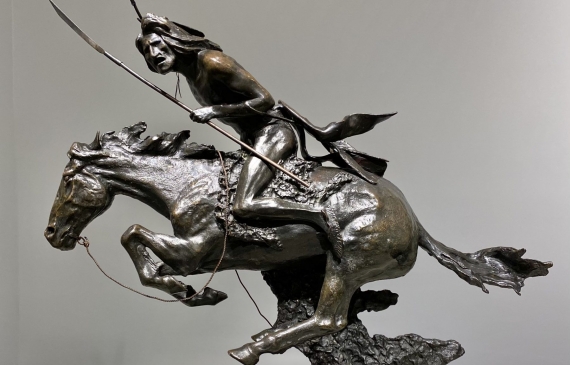
Frederic Remington (American, 1861-1909)
The Cheyenne, 1901
Bronze, dark brown patina
19 ½ H. x 23 ½ W. x 8 ¾ D. inches
Overall Height: 24 ¼ H. inches
Signed on base: Frederic Remington
Inscribed on base: Roman Bronze Works N.Y.
A New York native, Frederic Remington found his affinity for art when he started drawing soldiers and cowboys at a young age. He was not a strong academic, and when his father enrolled him in a church-run military school to try and direct the young boy, he took his first drawing lessons. He went on to study art and join the football team at Yale University until he had to step back and care for his ailing father in 1879, who soon passed. Remington was uninterested in returning to art school, and instead spent his time camping and traveling west, first arriving in Montana. The artist had the opportunity to see the last true manifestations of the wild American west, where conflict between the U.S. and indigenous people was still prevalent, cattle roamed the open plains, and the widely undeveloped plains that so many artists have been enchanted by. Eventually, he moved back to New York, settling in Brooklyn and studying at the Art Students League of New York, refining his style and execution. He accepted a job with Harper’s Weekly, a publication where he submitted sketches and illustrations, who sent him around America to portray and document various happenings. Over his career, he enhanced his capabilities in sculpting and painting, taking numerous trips around the U.S. and Mexico to gather inspiration. In 1895, he crafted his well known Bronco Buster out of clay, then successfully creating bronze copies that were sold at Tiffany’s.
In 1905, the artist was featured in Collier magazine, who devoted an entire issue to showcasing his work, accounting for a serious spike in publicity. Remington is today considered one of the premier American artists who focused on conveying the landscape, people, and emotion of the West.